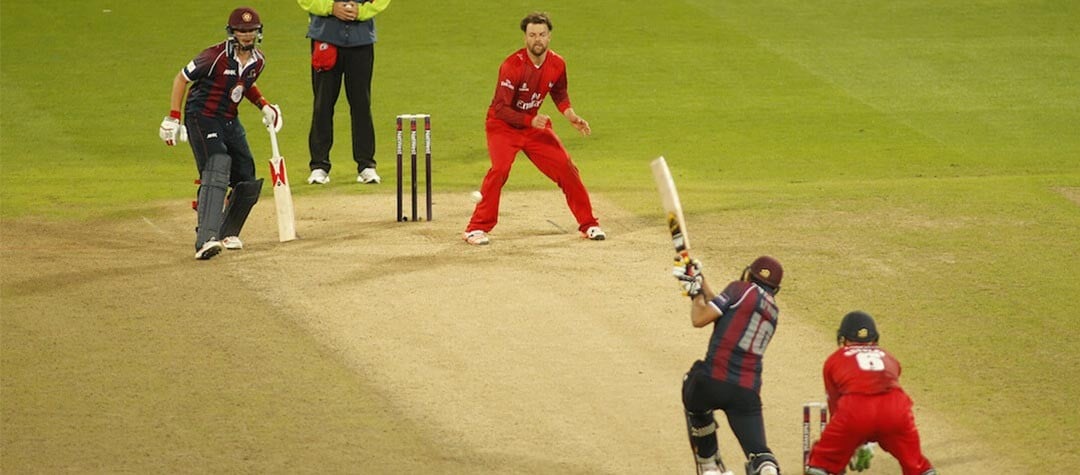Make beach cricket fair and square next time you pick up the bat, with our quick intro to the game.
Beach cricket is an informal version of the game played on the beach and involving just about anyone who wants to play. Everyone is free to and usually does make up the rules as they go, making it an ideal game for the family, friends and frustrated cricketers.
While there are some serious competitions, each of which have their own rules and variations, we’ll try and give you some of the basics which generally cover the majority of beach cricket versions, all of which are loosely based on the standard rules of cricket.
- The basic equipment consists of a bat, ball (often a tennis ball because it hurts less and bounces more) and two sets of stumps (quite often a beer cooler at each end will suffice).
- If only one set of stumps is available, the non-strikers end can be marked by something as simple as a T-shirt, hat or even a shoe. In these circumstances, this means the bowling will only be to one end.
- There can be a designated wicketkeeper although a windbreak, deckchair or equivalent can often be used in place of the glovesman.
- There are generally no restrictions on the number of players and even the family dog can be allowed to play. Teams can range from 1 versus 1 to 100 or more per side!
- Sometimes it might just be everyone fielding until one of the two batting are out. Just decide what works best for you and your number of players.
- Often the person getting the batter out becomes the batter, but this will depend on whether you are playing a team variant or each person as an individual.
- Games can often be split into a defined number of overs per side (6 balls being one over), but if time allows, quite often more innings are added in between the all-important lunch, drink and ice cream breaks.
- If the number of players is small, players can keep their own scores or team up up in twos, threes etc. Father and son versus daughter and mum is always a good one guaranteed to throw up some controversy.
- Wides and no-balls generally do not exist and the LBW rule is optional since there isn’t an official umpire.
- Batsmen can be out through any of the usual ways such as being caught, run out, and bowled.
- A batsman who hits the ball into the sea is usually awarded a six, but also given out – and to compound their misery, they have to fetch the ball – it’s the law!
- A batsman hitting the ball into a bunch of angry and hungry picnickers should be man or woman enough to go and fetch the ball.
- A one-handed catch can often mean that the innings comes to an abrupt close.
- A batsman may be obliged to run when they hit the ball, regardless of how good the contact with the ball is.
- A batsman can keep running, especially when the ball has been lost in the sand dunes or has been stolen by the dog. This makes it possible to score an unofficial new world record for runs scored in an over.
- Batters keep their own score and must shout out their score at the end of each run, although no-one is really listening or even cares.
- Declaring, especially when reaching 100 or more is actively encouraged to prevent the game stretching to sundown or the beers running out (whichever occurs first).
- Rain should never stop play, except when a hurricane or tsunami is on the way. It’s not like you are playing on the green grass of Lords or the SCG is it?
- The rules are made to be broken, or at least improvised, so see what you can get away with.
- The person who has done the most annoying in game commentary, mimicking whatever cricketing commentator of their choosing, gets a dunking at the end of the game – guaranteed.
So there you have it. Beach cricket is an improvised free-for-all where anything goes. Expect spectacular catches, flattened sandcastles, regular ‘refreshment’ breaks, parents that hog the batting and frequent tantrums.
If you want to look at the game as a serious pastime then you could take a look at the rules employed in the Beach Cricket Tri-nations series which was contested in the past by former cricketing greats from Australia, England, New Zealand and South Africa.
Rules include eight overs in an innings, the use of ‘Captain's Choice’ overs when the captains are allowed to field the batsmen and bowlers of their own choosing. Also, when a batsman is dismissed, he keeps batting but he loses runs, so that if a team is really bad it is actual possible to make a negative score. However, the game is far more fun if you just make it up as you go.














